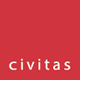Dan & Katelin-
I want to appreciate your feedback and questions from the last teleclass on the 2x2.
I think the below quote provides a useful frame:
“If you're not confused, you're not paying attention.” -- Tom Peters
Before you dive in, feel free to grab a cup or coffee.
😊
So….
Yes. The 2x2 is ultimately about “relative” value and where things often get confusing is when we mix the STATIC vs. DYNAMIC application of the tool.
The first step is to simply use the 2x2 as a STATIC exercise in the context of a year for a company or a department. Practically, most of you can use this tool with your team (schedule 2-4 hours)
to plot your existing 2018 priorities. This exercise would likely surface that your currently committed to too many priorities for your limited time and resources/money. Teams can then debate the relative value and made the painful decision to move several
priorities into the DELAY/IGNORE box for the remainder of 2018. Keeping these DELAY/IGNORE priorities explicitly on the 2x2 ensures that they aren’t forgotten and become candidates for consideration during another STATIC meeting (schedule 4-8 hours) in the
fall for your 2019 annual planning.
Now…let’s continue with this scenario using Dan’s Salesforce implementation question. Assume that your company doesn’t have the time or resources in 2018 for a Salesforces implementation but
the team thinks it’s an important future initiative. Therefore, we put this priority “on deck” in the DELAY box for the remainder of 2018. During our 2019 planning meeting in November (full day off-site) we acknowledge our progress and recognize that space
has been created to consider some new initiatives for 2019. Now the 2x2 become DYNAMIC because we decide to pull the Salesforce implementation out of the DELAY box and put it into the WORK IN box for 2019. During 2019, we assign a key executive to learn about
Salesforce (interview department heads for needs, build a relationship with an outside technology partner, scope and price project, etc) and provide updates to the executive team (when we have bandwidth to “work it into our meetings”). In October of 2019,
our leadership team goes on a 24-hour overnight retreat (possibly with an outside facilitator) and uses the learning from the Salesforce WORK IN initiative to move the initiative into the SELECTIVELY INVEST box for 2020. The team budgets $900,000 (high cost)
and a huge amount of executive team, operational team, and sales team time (high cost) to make the implementation a priority (because of high value for 2020).
Now to Katelin’s question. After a significant investment in 2020 into the Salesforce implementation, we meet again in October of 2020 for 2021 annual planning and recognize that we need another
full year of focusing on institutionalizing this new technology into our culture. Therefore, we move the initiative to DRIVE DAILY for 2021 because ensuring its success becomes low hanging fruit (huge value for low effort relative to other company priorities
for the new year). Eventually, at the end of 2021, the team concludes that Salesforce has become an
organizational habit and doesn’t need to even be on our next 2x2.
See the attached slide to ground yourself in this summary: the dynamic nature of an initiative (aka the “life” of an initiative”) is best thought about over a period of planning cycles (years
in this scenario). Yes Dan - a more sophisticated/faster approach would allow for the exact scenario to unfold over a period of quarterly adjustments rather than annual adjustments. Same patter simply compressed.
Questions and reflections welcome,
Rand
Rand Stagen
Partner | Stagen
rand@stagen.com | o: 214.217.9214
3535 Travis Street | Suite 100 | Dallas, TX 75204
From: dickinson@stagen.simplelists.com <dickinson@stagen.simplelists.com>
Sent: Thursday, May 31, 2018 11:07 AM
To: Dickinson ILP (dickinson@stagen.simplelists.com) <dickinson@stagen.simplelists.com>
Subject: 2 x 2 confusion
Maryellen, all -
This teleclass has confused me regarding how the 2x2 works. I thought the point of the model was to compare initiatives
relative to each other in terms of value and cost/effort. If that is the case, I don’t see why an initiative would have to necessarily move from Work In to Selectively Invest, or from Selectively Invest to Drive Daily.
For example, if Initiative X is categorized as Work In – low value, low cost – and then is simply executed using excess capacity, isn’t that the end of the analysis? Moving it to Selectively Invest means – I think – that the initiative’s
relative value and cost/effort would increase. This might happen, since it’s a relative analysis, but logically it need not, right?
Similarly, if I categorize an initiative – to take a live example, a Salesforce implementation – as Selectively Invest (high value, high cost / effort), moving it to Drive Daily suggests that over time, that initiative becomes easier and/or
less costly, relative to other initiatives in the 2 x 2. Why would this necessarily be the case? If a Salesforce implantation is extremely expensive and labor-intensive but mission-critical in terms of value, isn’t it possible that that initiative would be
both (a) the firm’s number 1 priority, and (b) remain in Selectively Invest for the entire life of the initiative?
My understanding from the workshop prior to the call was not that initiatives necessarily need to move from one box to the other in the 2 x 2, or that they need to move in a particular order. It seems to me that since it’s a relative analysis,
they could move from any box to any other box depending on which initiatives are being evaluated.
I am probably missing something here, so would love some insight.
Best,
Dan
|
